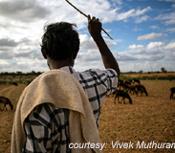A role for atmospheric CO2 in preindustrial climate forcing

Complementary to measurements in Antarctic ice cores, stomatal frequency analysis of leaves of land plants preserved in peat and lake deposits can provide a proxy record of preindustrial atmospheric CO2 concentration. CO2 trends based on leaf remains of Quercus robur (English oak) from the Netherlands support the presence of significant CO2 variability during the first half of the last millennium. The amplitude of the reconstructed multidecadal fluctuations, up to 34 parts per million by volume, considerably exceeds maximum shifts measured in Antarctic ice. Inferred changes in CO2 radiative forcing are of a magnitude similar to variations ascribed to other mechanisms, particularly solar irradiance and volcanic activity, and may therefore call into question the concept of the Intergovernmental Panel on Climate Change, which assumes an insignificant role of CO2 as a preindustrial climate-forcing factor.







